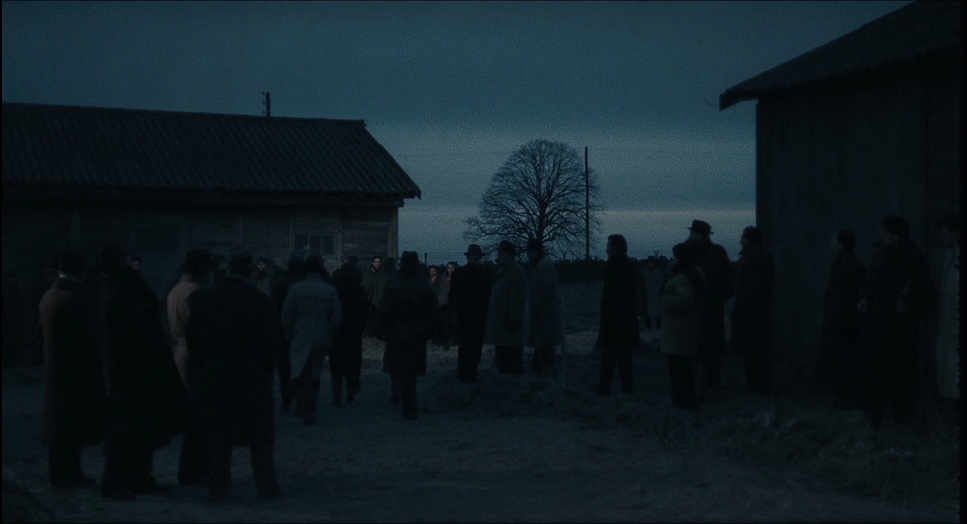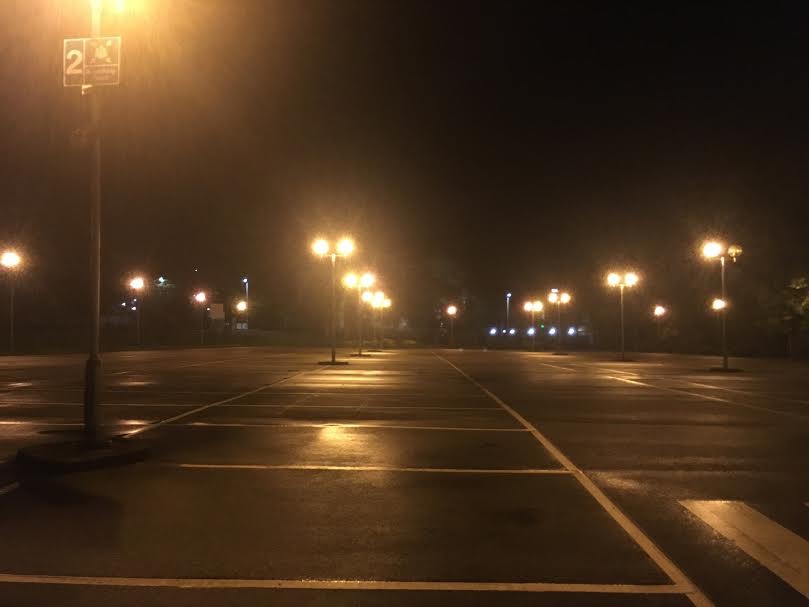
imran qureshi
-
Posts
48 -
Joined
-
Last visited
Posts posted by imran qureshi
-
-
I am looking to purchase a pipe boom/menace arm kit, problem is that they all take american size speedrail either 1 1/4 (42.164 OD) or 1 1/2 (48.26 OD).
This size aluminium pipe is quite difficult to find in the UK, What uk size scaff tube would I buy to use these rigs?
And also does alloy type matter? Because i know that american speedrail is 6061-t6 grade but this is difficult to find in the uk
Many thanks!
-
7 hours ago, David Mullen ASC said:
The light during twilight gets bluer by the minute and if you record ProRes, the color temperature is baked into the recording so it helps to get it close to what you want. Since it can take time to create different color temp settings in the Alexa beyond what is already there, I have the ACs pre-build a couple of settings. Early twilight, I might start at 3800K or 4000K for a blue look... but soon I’ll jump to 4300K, 4800K, 5500K before it’s gone completely. The exact values aren’t important, the idea is just to keep the image from getting super blue.
Brilliant, thank you! Enjoyed your ep on the team deakins podcast by the way!
-
10 minutes ago, Satsuki Murashige said:
What camera/format/codec or film stock are you shooting on?
Thanks a lot! I shall be shooting on the alexa mini in prores.
Looking at the still from ‘Burning’, would you recommend solely shooting actual blue hour to get this look and use the wb to reinforce the blue tint to taste? or would you say that the look is quite easy to fake with white balance and underexposure at any time of day? As long as diffusion is used to soften hard sunlight? (8x8 or 12x12 frames)
thanks!
-
Shooting a blue hour scene without a calibrated monitor only using a light meter. The scene is not in a full silhouette so will need to see the subjects faces.
For a shot similar to the one below (Burning), If I am taking my light readings by taking an incident reading on the key side of my subjects face, how underexposed I should go in camera? or would it be better technique to expose the skin tones properly and bring everything down in post?
("Burning" - Directed by Lee Chang-dong - DoP - Hong Kyung-pyo)
Secondly for a shot like the one below (Army Of Shadows) where everything seems to be generally underexposed, where should I take my light readings from and how many stops under would you advise going?

("Army Of Shadows" - Directed by Jean-Pierre Melville - DoP - Pierre Lhomme / Walter Wottitz)
Hope this makes sense, many thanks!
-
14 hours ago, Satsuki Murashige said:
Yes exactly, it's common to tent windows when shooting day for night interiors.
Thanks! is there a specific technique/procedure for this or is it just as simple as buying a tent/canopy that fits the dimensions of the window?
-
For an interior scene with windows in shot, I am wanting to black out the daylight coming through the window and then light from outside through diffusion so that the lighting from the window is consistent and controlled throughout the whole shooting day. Is there a common method of doing this?
perhaps using a black tent/gazebo outside the window and then placing lights inside the gazebo or blocking out daylight with 12x12 black solids?
Thanks!
-
On 1/31/2021 at 4:49 PM, Phil Rhodes said:On 1/31/2021 at 5:11 PM, Phil Rhodes said:
Oh, and I should add, "schedule 40" is one of those weird standards where the actual outside diameter of the tube is nothing to do with the specified size, so one-inch schedule 40 tube has an OD of just over 33mm. Make sure you get what you need. You generally won't find people selling schedule-anything in the UK so just go by OD.
Thanks so much for your detailed explanation! very useful!
-
17 hours ago, Patrick Baldwin said:
Try here. Googling speed rail tubing for other options .
Looking at that website, it seems to be all elbows and different mounting options and not the rail itself. I'm trying to find 6061 schedule 40 pipe as this seems like the standard for building rigs for grips but finding it hard to find those specs for pipe in the UK. Not sure whether I am looking at USA stuff and there is a different name over here.
I should have posted this in the Grip section, however I am not sure how to delete this post so I can post there instead as I dont want to spam the forum.
Cheers
-
Been trying to search this for a long while, perhaps its called something different in the UK?
I am trying to buy speed rail for a goal post rig in which I will hang a kino flo 4 bank. Preferably I am looking for a 10 foot long speed rail, however for transport I may have to connect two 5 foot ones, however not sure how to check how safe this would be and the max load it would be capable of. I also cannot find a place to order them in the UK.
Any advise?
Thanks!
-
6 hours ago, Satsuki Murashige said:
The bigger the key, the more you have to move it side-ier to keep the shadow side dark. You may then need to add a dimmer fill light on the key side or a frontal eye light to keep the eyes from going black.
Ah brilliant, thanks! The portraits look great. How soft of a fill light did you use on the key side? Or if you used a frontal eye light, what kind of source was used for the portraits? Cheers
-
If my intention is to have a soft but contrasty image and I am lighting a subjects face with a 8x8 diffusion frame and find that it is wrapping too much light into the fill side of the face (even with a negative fill lets say), is it considered good technique to then switch to a harder (but still soft) light such as a 4x4 diffusion frame? and if the problem persists, keep going smaller or increasing the distance of the light (harder) until I get the right compromise? Or would it be better technique to use more flags or change position of the light to be more a more 180 degrees from the subjects key side? or perhaps something else?
Hope that makes sense, many thanks!
-
I'm interested in some effects gels such as 183 Moonlight blue, twilight blue and a few others, the light that I want to use it with (aputure 300d mk2) is daylight only, not sure what source you meant to use it with to get the desired 'moonlight blue' effect.
Trying to find the answer to this everywhere but no luck.
Wondering if anyone could help, thanks!
-
8 minutes ago, Stuart Brereton said:
There are many examples, but two that actually come with lighting diagrams are the night scenes from True Grit and NCFOM. Roger Deakins has posted stills and diagrams on his website. Obviously, these were huge setups with multiple lamps, but the principles remain the same no matter how big or small your scene.
Thanks a lot!!
-
2 hours ago, Phil Rhodes said:
I have to say I'm actually not that big a fan of this; the softness of it makes it read as artifical to me.
Cheers! Do you happen to have an example of a moonlight scene that you think is more realistic with a harder source? every-time I look at moonlight in real life, it is definitely hard but every time I see it being a hard source in films, Im not sure, it seems a bit weird looking to me but maybe we aren't thinking of the same thing.
-
In the above tutorial, at 2:00 the DoP connects four 4x4 diffusion frames together to create a cube, then uses a 4x4 reflector as the top layer of the cube. The cube is then placed 20ft in the air using stands, and then he blasts a light up into the cube to create his moonlight.
Wondering what people’s thoughts on this are for getting a base exposure of moonlight at night, what are the pros and cons? Seems like a good idea especially on a tight budget but would be good to get a second opinion before I invest.
-
20 minutes ago, Stuart Brereton said:
Remember that sodium vapor is a monochromatic source (or as near as makes no difference). Those lamps only emit light in a very narrow range of frequencies in the yellow/orange spectrum, and are far warmer than tungsten. You'll be trying to add gain to the blue channel, but there is no blue light in sodium vapor lamps. That will make white balancing it to look cold much more difficult, and will introduce a lot of noise into the blue channel.
Understood, so do you think i'm better off scraping the location and try to scout a location with white LEDS? thanks!
-
1 minute ago, Stuart Brereton said:
It can be done. You'll need to WB to about 2000k, maybe even lower. This will cause a big imbalance in the gain applied to the RGB channels in your camera, so it probably won't be correctable without introducing a lot of noise if you change your mind.
Also, tungsten streetlights are extremely rare in the UK. Almost all were replaced by sodium vapor many years ago, and more recently by LED. Are you sure that you've got that right? It might make a difference.
Yeah sorry, it was a bit of a generalisation to say it was tungsten, it is probably sodium vapor. Here is a blury phone picture of the actual location. I was going to go to the location with my camera and figure out the actual kelvin of the lights by adjusting the white balance in camera until I get a neutral white light.

-
Working on a student music video. It's at night in a perfect car park location that is being lit by various lampposts. It is a similar location to this Casey Neistat Samsung ad (I coloured corrected the screen-grab to appear blue).
I want the lampposts to give a cool blue look, however, the trouble is that the location I have, the lampposts are tungsten.
As they are in the shot, I am unable to gel the lampposts or anything like that. So I am wondering if it is a ludicrous idea to make the tungsten lampposts appear cool blue by manipulating the white balance in-camera?
I also want a 'white light', neutral key-light on the subject and so I'd just make the key light the same kelvin as whatever the camera will be when adjusted to make the tungsten lamposts appear bluer (to taste).
Is this a terrible idea and I just need to scrap the location and find a car-park with cooler daylight lampposts? or could this potentially work?
Would love to hear peoples thoughts!
Thanks! -
I can't seem the find the answers to these two questions, (the following is based on how my teacher taught us at film school).
-
Why, when taking an incident reading do you point the dome towards the light and not the camera?
-
When measuring contrast ratios with an incident dome, why do you cover up the contaminating light?, in other words why do you measure each light separately?
expanding on question 2:
If you are measuring the contrast ratio of a subject on a 3 point lighting set-up, depending on where the key light is placed, the key will inevitably spill onto the 'fill side' of the subjects face and so when measuring the fill with a meter, surely you have to account for this 'spill' from the keylight, because it will inevitably affect the final result?
as in if you dont account for that spill then whats the point of having contrast ratios because you will get compltely different looks for each contrast ratio depending on how much the key light wraps into the 'fill side' of the face? (and vice versa with the fill light)
Side note: I am asking my lecturer and he doesn't really want to give me any answers, he is just says 'stop overthinking', it helps me to know the ins and outs and not just blindly follow what my lecturer says without knowing why.
Wondering if anybody could help me out. Thanks so much!
-
-
I'm shooting a music video where I want a cool blue night exterior, I'm going to be shooting tungsten (wb in camera) and lighting with uncorrected daylight lights and wondering what the best solution would be for getting the soft, even fill? I am wondering if I should create my own DIY balloon lights to hang in the air to get the fill but wondering if anybody had any better suggestions?
I will also be using the key light on the subject, I want him to be illuminated more than the surroundings (subtly)
I will also be using haze, a wet down and a snow machine.
Thanks!
-
Hi David,
Thanks! yes my mistake, I didn't mean to make it double-blue.
As for skin tones, I agree with you! its only that I had a bad experience doing this once where the skin tones ended up looking the same tone as the wall behind and it looked super flat, there was no separation.
As opposed to in this image, there seems to be a lot of separation between the skin and the surroundings. I thought maybe having a tungsten light on the talent would help with the separation but I suppose the colour of the wall has a lot to do with that also.
-
So I am trying to achieve and a subtle teal and orange look similar to the image below and I want to do it in-camera as much as I can (obviously it will be enhanced in resolve but I just want to make it as easy for the colourist as possible).
Here is my thought process
I could shoot at 3200k in-camera and gel windows with CTB, then create some ambient blue fill light in the room by bouncing a CTB gelled light at ceiling, then key my talent with a 3200k source (same kelvin as camera) to create natural looking skin tones. (i would then CTO my tungsten practicals to make them even warmer in camera)
For my scene though, the actors move around the room a fair bit, how would one go about keeping skin tones looking natural and making sure there is skin separation from the walls in camera? would I just Hollywood a source that was balanced to what the camera was to key-light my talent? Although, I do want the it be as naturalistic as I can
any suggestions or thoughts?
I know there are a lot of different ways of tackling this, I am more interested to hear different ways of how people would light this and how to keep skin separation when actors move around room a lot in scene?
Thanks!
(sourced from reddit, the work is not mine, here is the link to that post;
https://www.reddit.com/r/cinematography/comments/kgymng/shot_my_first_spec_ad_let_me_know_what_you_think/?utm_source=share&utm_medium=web2x&context=3 )





How to use uk scaff tube with American speedrail fittings?
in Grip & Rigging
Posted
Thanks as always Phill!!
in terms of heavy over head rigging, I just want to rig a 4 bank kino (about 12kg) obviously including the scaff tubes and clamps it will probably be about 20- 25kg boomed above frame line on a menace arm for interiors (so probably about 10ft high)
In terms of the 1 1/4 menace arm kit (not really 1 1/4 as you know but really 42.164mm OD), i can find tube in the uk that is 42.4mm, do you think this would be okay? Or do you think i should just scrap the idea?
In terms of the alloy type/grade, I will have to do more research. Not sure why there aren't any menace arm grip kits made for uk pipe, seems a bit strange.